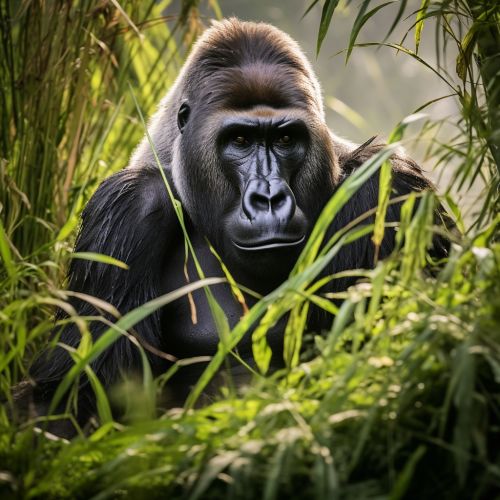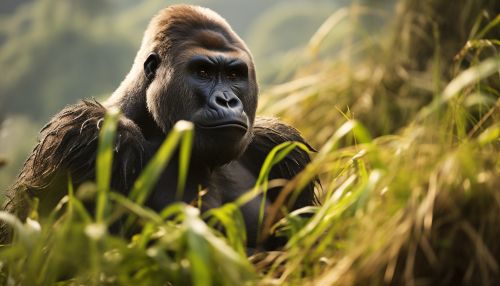Gorilla
Taxonomy and Evolution
Gorillas are a part of the primate order, which also includes humans, monkeys, and apes. They belong to the family Hominidae, also known as the great apes, which includes orangutans, bonobos, chimpanzees, and humans. Gorillas are further classified into the genus Gorilla, which is divided into two species: the eastern gorilla (Gorilla beringei) and the western gorilla (Gorilla gorilla). Each species is further divided into two subspecies.


The evolution of gorillas is a topic of much scientific study and debate. Fossil evidence suggests that the gorilla lineage diverged from that of their closest living relatives, the chimpanzees, about 7 million years ago. However, molecular studies suggest that this divergence may have occurred as recently as 4 million years ago.
Anatomy and Physiology
Gorillas are the largest living primates. Adult males, also known as silverbacks, typically weigh between 140 and 200 kg, while adult females usually weigh between 68 and 113 kg. Gorillas have a robust and muscular build, with long arms that are much longer than their short, stout legs. Their chest is broad and powerful, which aids in climbing and knuckle-walking, their primary mode of locomotion.
Gorillas have a distinctive facial structure with a prominent brow ridge and a large nose. Their teeth are adapted for a diet of vegetation, with sharp incisors for cutting plants and strong molars for grinding. Gorillas have a relatively short lifespan in the wild, typically living to around 35 to 40 years, although they can live over 50 years in captivity.
Behavior and Ecology
Gorillas are highly social animals, living in groups called troops. A troop typically consists of one dominant silverback, several adult females, and their offspring. The silverback is the leader of the troop and makes all the decisions, mediates conflicts, determines the movements of the group, leads the others to feeding sites, and takes responsibility for the safety and well-being of the troop.
Gorillas are primarily herbivorous, with a diet that consists mostly of leaves, stems, and fruits. However, they also consume small invertebrates, providing them with protein. Gorillas have a slow rate of reproduction which makes them vulnerable to population decline. Females give birth to one infant after a gestation period of about 8.5 months. Infants are helpless at birth and are cared for by their mothers until they are about 3 years old.
Conservation Status
Gorillas are listed as critically endangered by the IUCN. The main threats to gorillas include habitat loss due to deforestation, disease, and poaching. Conservation efforts are focused on protecting gorilla habitats, anti-poaching patrols, and disease research.
Cultural Significance
Gorillas have a significant presence in popular culture and media. They are often portrayed as powerful and noble creatures, and are frequently used as symbols of nature, wildlife, and conservation. Gorillas also play important roles in the mythology and folklore of various African cultures.
